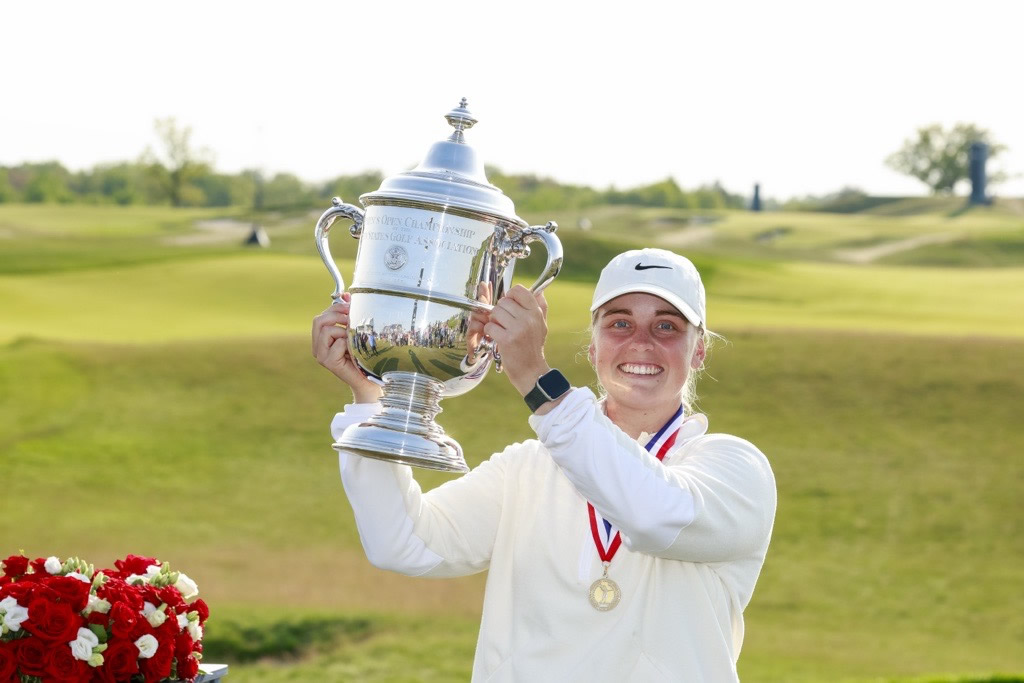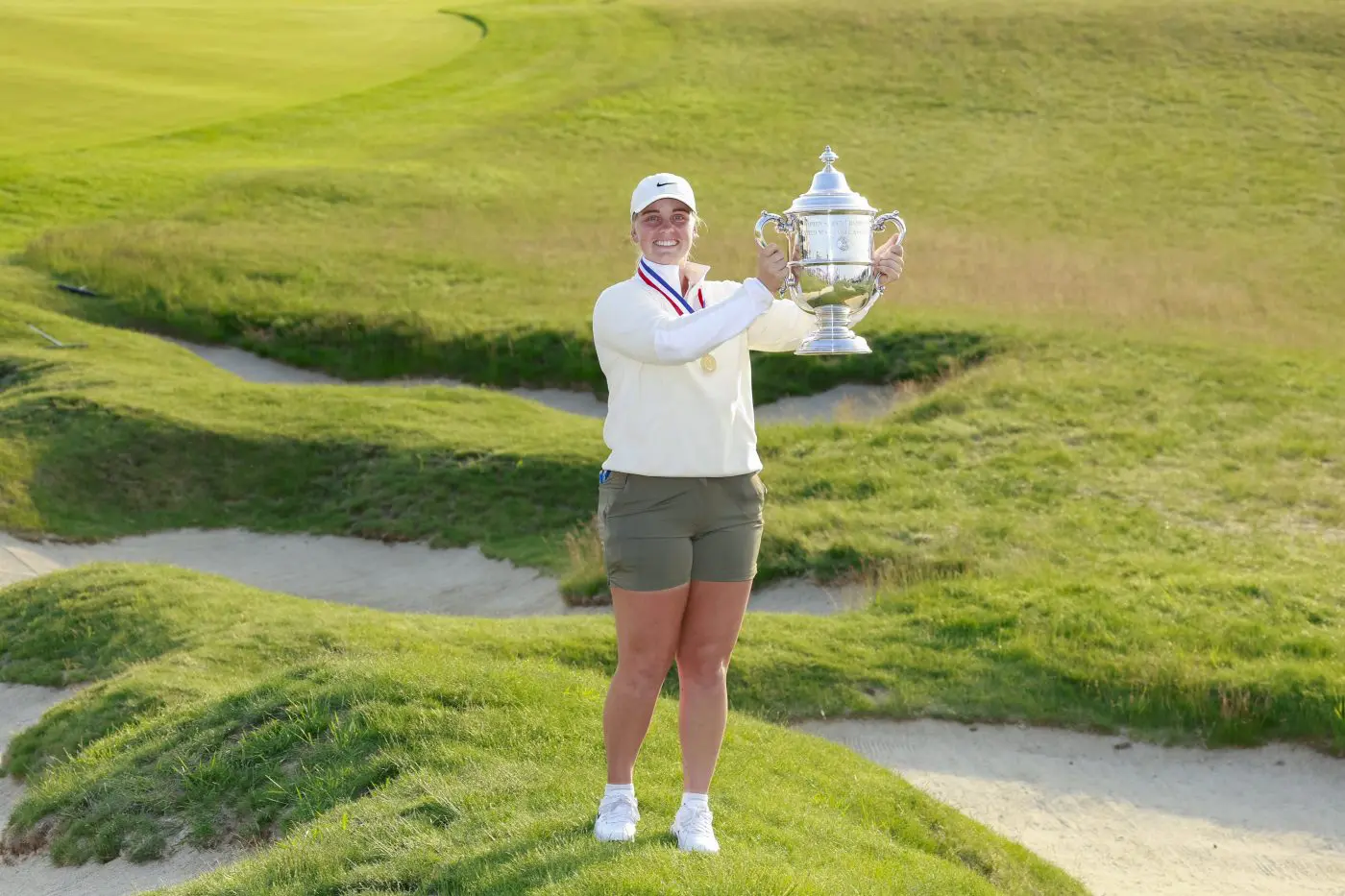Stark started the day one stroke ahead of qualifier Julia Lopez Ramirez, two clear of Takeda, Shibuno and Saigo with Korda three back. Her three-birdie, three-bogey performance was very much out of the playbook Annika Sorenstam used to win this championship three times, the last in 2006.
Stark played with great control and waited for others to make the mistakes. When she was in trouble, she made certain that bogey was the worst number she could make. She is the third Swede to hoist the Harton S. Semple Trophy, joining Liselotte Neumann (1988) and Sorenstam (1995-96 and 2006).
Stark is clearly a star on the rise, finishing T-2 in the 2024 Chevron Championship and tying for ninth in the 2023 U.S. Women’s Open at Pebble Beach Golf Links. She now has nine professional wins after a standout college career at Oklahoma State.
“[This means] so much,” said Stark. “Before this week, I was worried that I wasn’t really going to play decent golf for a while because it felt like it was so far away. So this just feels huge.”
The key moment came midway through the final round when a two-stroke swing was created by a Korda bogey on No. 13, the result of a three-putt and miss from 5 feet, and Stark converting a 14-foot birdie on No. 11. Both occurred almost simultaneously. That moved Stark three strokes clear of Korda, Shibuno and Takeda and she brilliantly protected the lead over the final four holes.
Stark showed off her steely nerves with a gutsy two-putt par from 50 feet. The 4-footer continued the momentum Stark had created following a two-putt birdie at the par-5 14th hole.
When she found trouble on Nos. 17 and 18, she minimized the damage by taking her medicine and making bogey when the results could have been far worse.
Saigo, the year’s first major winner (Chevron), had held the lead at 8 under par after 36 holes, and brieflygot to 9 under after the third hole of Saturday’s third round, a number no competitor reached until Stark’s birdie on 14.
That Korda bounced back from a front-nine 40 in Saturday’s third round to play the final 27 holes in 4 under par showed a grit and determination that put to rest her struggles in 10 previous appearances in this championship. Korda called her relationship with the U.S. Women’s Open “complicated.” She had missed the cut in three of her last five starts. The tie for second was her best U.S. Women’s Open finish in 11 starts, which dates to 2013 when she competed as a 14-year-old amateur.
“Last year definitely put a dagger into my heart,” Korda said about missing the cut at Lancaster Country Club. “But that’s just golf. I mean, you’re going to lose more than you win a majority of the time. I feel like I actually learn a lot about myself and my game and where I need to improve playing the U.S. Women’s Open because it does test every part of your game. Maybe just a little bit of disappointment. But it’s also super motivating.”
Stark opened the final round with all pars until she rolled in a 20-foot birdie putt on the par-3 sixth hole to get to 8 under par. Saigo and Korda, playing two groups in front of Stark, both birdied No. 1, putting Saigo one stroke off the lead at 6 under par and Korda at 5 under par.
After a bogey on No. 6, Korda made back-to-back birdies on Nos. 7 and 8 with putts of 7 and 17 feet, respectively, to get to 6 under, tied for second place with Saigo and Shibuno, two strokes behind Stark. When Stark bogeyed the par-5 seventh hole, her lead was a single stroke over Korda and Shibuno.
Then came that key two-stroke swing a few holes later. Once she had the lead, Stark was both relentless and smart. An even-par final round was good enough for the victory and that’s exactly what she did.
Sorenstam was only a year younger than Stark when she won her first professional championship at the 1995 U.S. Women’s Open at The Broadmoor’s East Course. That should be an inspiration for Stark to build on her success. She even received notes from both Sorenstam and Liselotte Neumann, who was the first Swede to take home the U.S. Women’s Open in 1988.
“They texted me yesterday,” said Stark after her round on Sunday. “[They said,] ‘bring it home.’ That was already cool to just get those texts.”
Now she has a trophy to go with those messages.
Notables
World No. 1 Lottie Woad, of England was the lowamateur at 293, two strokes better than University of Texas All-American Farah O’Keefe and recent Wake Forest graduate Carolina Lopez-Chacarra. They were followed by 2023 U.S. Girls’ Junior champion Kiara Romero (296), 16-year-old Rayee Feng (297) and 2024 U.S. Women’s Amateur semifinalist Maria Jose Marin (299), the 2025 NCAA Division I individual champion from the University of Arkansas
Romero, a 19-year-old All American at the University of Oregon, shot 84 on Saturday and was in the first group out on Sunday. She closed with a 67, the lowest final-round score ever in the U.S. Women’s Open by an amateur.
The future of women’s golf is bright indeed! The oldest players among the top six going into Sunday’s final round of the U.S. Women’s Open were Hinako Shibuno and Nelly Korda at 26. Julia Lopez Ramirez and Rio Takeda are 22, Mao Saigo 23 and Maja Stark 25.
Julia Lopez Ramirez, a qualifier who played in the final group with Maja Stark, made a triple-bogey 8 on No. 18 to fall out of the top 10 and miss an exemption into next year’s championship at Riviera Country Club. But qualifier Hailee Cooper, an Epson Tour player, did post a tie for seventh to earn a tee time at Riviera. The 2016 U.S. Women’s Amateur Four-Ball champion carded a final-round 70.


